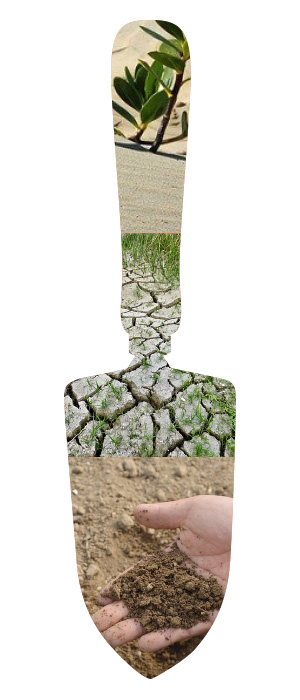Dirty Secrets
Submitted by Molly Popp Colorscapes Greenhouse & Nursery
 Are you already daydreaming of your garden sanctuary? The winter, although mild for us this year, drags on as we yearn for spring color. Daydreaming of the beauty above the ground is welcoming but it’s what is below the surface that brings those dreams to reality. The dirty secret to a beautiful yard is in your soil.
Are you already daydreaming of your garden sanctuary? The winter, although mild for us this year, drags on as we yearn for spring color. Daydreaming of the beauty above the ground is welcoming but it’s what is below the surface that brings those dreams to reality. The dirty secret to a beautiful yard is in your soil.
It’s a dirty and boring secret, one we don’t talk much about but it’s crucial to your garden’s potential. I grew up in a gravel pit and I still think soil is boring…but I have learned to appreciate it and have a grand respect for what Mother Earth provides.
The secret is to know the 4 types of soil and understand what each can and can not provide.
Clay
Clay has very fine mineral particles. It’s sticky and there’s not much space for water and air in between mineral particles, creating drainage issues. Often, flowers and vegetables do not have a strong enough root systems to push through clay soils.
Sand
The largest particles, has excellent drainage but does not hold water or nutrients for long, causing plants to dry out quickly.
Silty Soil
Silty soil is a good mixture of sand and clay and is slippery when wet (like my favorite Bon Jovi album). This soil is great if drainage is provided and managed.
Loam
Loam is a perfect balance of sand, silt and clay, it’s the place where plants thrive. Think of loam as your favorite pair of slippers, when your feet are happy, your body is happy. Like your slippers, this soil is where plants’ root systems are the happiest.
What kind of soil do you have?
You’ll need to dig around and test your soil in various areas of your yard. Dig some soil and moisten it, if it sticks together, it’s clay, if it crumbles, it’s sandy and if it’s slippery, it’s silty. Knowing this information leads you to the next step which is to amend the soil to create a more ideal environment. If you’d like, send a sample into the Extension Office and have it tested. This will give information about your soil as well as the nutrients within.
Next month, we’ll discuss soil amendments, pH and how to balance things out.